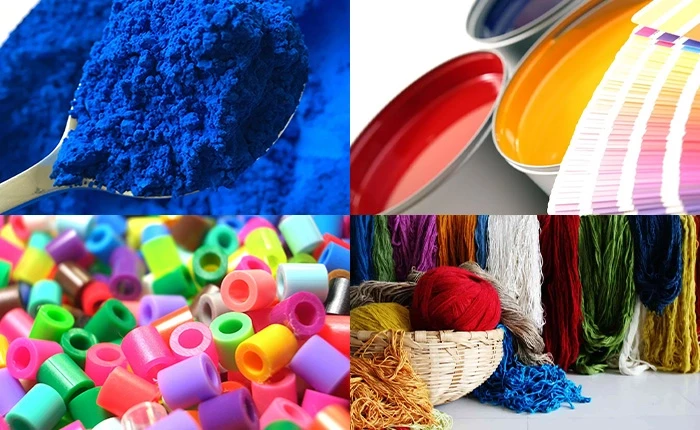making indigo service
The Art and Science of Making Indigo Dye
Indigo dye, known for its deep blue hue, has a rich history that dates back thousands of years. Used in various cultures across the globe, from ancient Egypt to the indigenous peoples of Africa, Southeast Asia, and the Americas, this natural dye has not only been a staple in fabric dyeing but also a symbol of art, culture, and tradition. The process of making indigo dye is both an art and a science, blending traditional techniques with modern innovations.
The Origins of Indigo
Indigo is derived from the leaves of the Indigofera plant, particularly Indigofera tinctoria. The process of extracting indigo dye begins with harvesting the leaves, which are then fermented in water to convert the glycoside indican present in the leaves into indoxyl. As the leaves ferment, they release a blue pigment that, when oxidized, transforms into the indigo dye we know today. This transformation is a fascinating example of how organic materials can undergo complex chemical processes to yield vibrant colors.
Traditional Methods of Making Indigo
Traditionally, making indigo dye involves several steps. First, the fresh leaves are gathered and placed in a large vat filled with water. The mixture is stirred to break down the leaves, allowing the indican to release. This mixture is left to ferment for several days. During fermentation, the liquid changes color from green to a yellowish hue as indican breaks down.
After sufficient fermentation, the next step is to introduce oxygen into the mixture. This is done by whisking or agitating the liquid to create bubbles. The indoxyl produced during fermentation encounters oxygen and oxidizes into indigo crystals. As the mixture turns a deep blue, it becomes evident that the dye is forming. The blue liquid is then allowed to settle, separating the indigo dye from the liquid, which is known as vat liquor.
Harvesting and Processing Indigo
making indigo service

Once the indigo has settled, it is collected and dried. This dried indigo can then be ground into a fine powder, ready for use in dyeing fabrics. The most common dyeing technique involves soaking fabrics in the indigo dye bath, allowing the fabric to absorb the color. Remarkably, the color will appear greenish when taken out of the dye bath but will turn deep blue upon exposure to air, revealing the magic of indigo.
This process of dyeing fabric with indigo is not just practical but also artistic. Many artisans use shibori techniques, where they tie, fold, or stitch fabric in creative patterns before dyeing, resulting in beautifully intricate designs marked by the indigo hue. Every fabric tells a story, reflecting the traditions and artistic expressions of the culture from which it originates.
Modern Innovations in Indigo Dyeing
In contemporary times, the practice of creating indigo dye has evolved. While some artisans continue to uphold traditional methods, many are now exploring sustainable practices. Synthetic indigo, which is cheaper and easier to produce than natural indigo, has become widely available, but there is a growing movement to return to natural dyes for their environmental benefits and unique characteristics.
Brands focusing on eco-friendly practices now champion indigo dyeing, using organic cotton and plant-based methods to create sustainable fashion. The resurgence of interest in natural dyes not only preserves cultural heritage but also encourages sustainable consumer practices.
Conclusion
The journey of indigo dye from plant to fabric illustrates a harmonious blend of nature, craftsmanship, and cultural expression. Whether through traditional or modern methods, the making of indigo dye embodies a rich tapestry of history, art, and innovation, ensuring that this timeless color continues to speak to generations to come.
-
The Timeless Art of Denim Indigo Dye
NewsJul.01,2025
-
The Rise of Sulfur Dyed Denim
NewsJul.01,2025
-
The Rich Revival of the Best Indigo Dye
NewsJul.01,2025
-
The Enduring Strength of Sulphur Black
NewsJul.01,2025
-
The Ancient Art of Chinese Indigo Dye
NewsJul.01,2025
-
Industry Power of Indigo
NewsJul.01,2025
-
Black Sulfur is Leading the Next Wave
NewsJul.01,2025

Sulphur Black
1.Name: sulphur black; Sulfur Black; Sulphur Black 1;
2.Structure formula:
3.Molecule formula: C6H4N2O5
4.CAS No.: 1326-82-5
5.HS code: 32041911
6.Product specification:Appearance:black phosphorus flakes; black liquid

Bromo Indigo; Vat Bromo-Indigo; C.I.Vat Blue 5
1.Name: Bromo indigo; Vat bromo-indigo; C.I.Vat blue 5;
2.Structure formula:
3.Molecule formula: C16H6Br4N2O2
4.CAS No.: 2475-31-2
5.HS code: 3204151000 6.Major usage and instruction: Be mainly used to dye cotton fabrics.

Indigo Blue Vat Blue
1.Name: indigo blue,vat blue 1,
2.Structure formula:
3.Molecule formula: C16H10N2O2
4.. CAS No.: 482-89-3
5.Molecule weight: 262.62
6.HS code: 3204151000
7.Major usage and instruction: Be mainly used to dye cotton fabrics.

